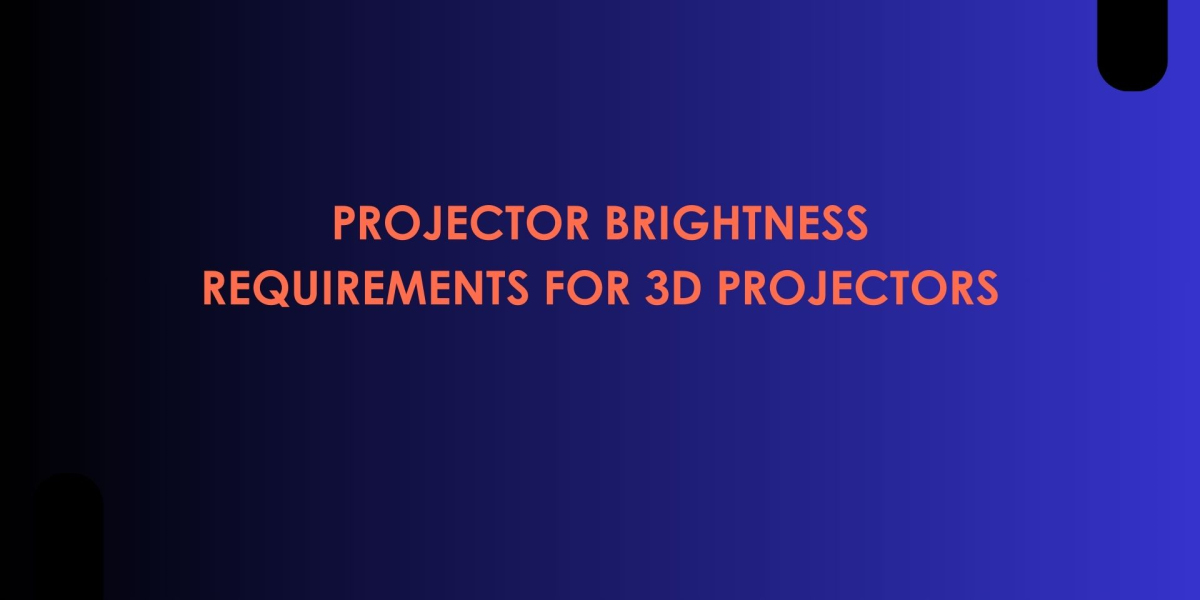When it comes to choosing the right projector, brightness is one of the most important factors to consider, especially for 3D projection. XTEN-AV has been a trusted platform for AV professionals to design, plan, and execute projects with precision. One area where brightness truly defines the viewing experience is with 3D projectors. Unlike standard 2D projection, 3D requires significantly more brightness to deliver clear, immersive visuals. That is why understanding projector brightness requirements for 3D projectors is essential when planning any installation.
Introduction
3D projection is designed to create depth, realism, and a more engaging experience for viewers. Whether it is a 3D movie theater, a corporate presentation using 3D models, or an educational application, brightness plays a critical role. When the audience wears 3D glasses, light output is reduced by almost half, meaning that projectors must compensate with higher brightness levels to ensure the image looks sharp and vibrant.
This blog will explore why brightness is so critical for 3D projectors, how many lumens are required for different environments, and practical tips to select the right projector for your needs.
Why Brightness Matters More in 3D
In 2D projection, the human eye sees the image directly on the screen without any light filters. In 3D projection, however, viewers must wear specialized glasses to separate left and right images. These glasses, whether active shutter or passive polarized, reduce the amount of light reaching the eyes.
Active shutter glasses: Reduce brightness by 60 percent or more because of alternating shutters.
Passive polarized glasses: Reduce brightness by about 50 percent since they filter out half of the light.
This means a projector that looks bright in 2D may look dim in 3D if it does not have enough lumens. To overcome this, projectors designed for 3D usually need two to three times the brightness of a typical 2D projector in the same environment.
Understanding Lumens in 3D Projection
Brightness is measured in lumens. The higher the lumen rating, the brighter the image will be. For 3D, lumens are especially important because of light loss through glasses and screen materials.
Here is a general guideline:
Home theaters: 2D projection may only require 2,000 lumens, but for 3D, at least 3,000 to 4,000 lumens is recommended.
Classrooms or lecture halls: For 3D educational projection, 5,000 to 7,000 lumens works best.
Large auditoriums or theaters: For 3D movies or presentations in large venues, 10,000 lumens or more may be needed.
Cinemas and commercial theaters: Professional 3D projection often demands 20,000 lumens or higher, depending on screen size.
These numbers reflect the fact that 3D content requires greater brightness to maintain clarity, contrast, and color accuracy.
Key Factors That Influence Brightness Needs
1. Screen Size
The larger the screen, the more lumens you need. A 100-inch screen may work well with 3,000 lumens for 3D, but a 300-inch cinema screen could require 20,000 lumens or more.
2. Viewing Environment
In dark environments like dedicated home theaters, brightness needs are lower. In classrooms or auditoriums with ambient light, projectors need much higher brightness to compete.
3. Glasses Technology
As mentioned earlier, active shutter glasses reduce more brightness than passive glasses. Choosing the right 3D technology can lower or increase projector brightness requirements.
4. Content Type
3D movies with bright, colorful scenes may not demand as much brightness as 3D technical content that relies on fine detail. Complex graphics and dark imagery require higher brightness for clarity.
5. Screen Material
High-gain screens reflect more light toward the audience, helping to improve perceived brightness. Standard matte screens may require higher lumen projectors to achieve the same effect.
Guidelines for 3D Projectors
Here are some practical guidelines when selecting a 3D projector:
For home theaters, look for at least 3,000 lumens to ensure comfortable 3D viewing.
For education or business environments, aim for 5,000 to 7,000 lumens.
For large auditoriums, 10,000 lumens or more is recommended.
For commercial cinemas, choose 20,000 lumens or above to deliver professional 3D experiences.
These levels help ensure that the reduction in brightness caused by 3D glasses does not negatively affect the viewer experience.
Best 3D Projector Options in 2025
The market in 2025 offers a wide variety of projectors specifically designed for 3D performance. Some of the leading models include:
Sony VPL-VW915ES – A high-end home theater projector with strong 3D performance and excellent color accuracy.
Epson Pro L12000Q – A 12,000-lumen projector ideal for large auditoriums and events.
Barco DP2K-20C – Designed for digital cinemas, delivering 20,000 lumens for large-scale 3D projection.
Christie Mirage Series – Professional-grade projectors offering up to 30,000 lumens with advanced 3D support.
These models are engineered to handle the higher demands of 3D projection, making them reliable choices for different applications.
Using Tools to Plan Brightness
Planning projector brightness requirements for 3D can be challenging. Tools such as a projector placement calculator can make the process easier by allowing you to input screen size, room dimensions, and ambient light to get an accurate lumen recommendation. XTEN-AV provides solutions that simplify this planning, ensuring that designers and venue managers can achieve the right results without guesswork.
Common Mistakes to Avoid
When selecting a 3D projector, many users make the mistake of choosing a model based only on resolution or brand name. While these are important factors, ignoring brightness can ruin the viewing experience. Some common mistakes include:
Choosing a 2,500-lumen projector for 3D in a large room.
Ignoring the reduction in brightness from 3D glasses.
Using a low-gain screen in bright environments.
Underestimating how much ambient light affects 3D projection.
By focusing on brightness first, these issues can be avoided.
Conclusion
Projector brightness requirements are even more critical for 3D projectors than they are for 2D setups. Because 3D glasses reduce light output, projectors must deliver higher brightness levels to ensure that content remains vivid and immersive. Whether it is a home theater, a classroom, an auditorium, or a commercial cinema, choosing the right brightness ensures that 3D content is presented in the way it was meant to be experienced.
With advanced tools and solutions from XTEN-AV, AV professionals and users alike can accurately plan brightness levels for 3D projectors. By understanding the unique challenges of 3D and matching the right projector to the environment, you can create an unforgettable viewing experience that truly brings images to life.
Read more: https://zekond.com/read-blog/226873








